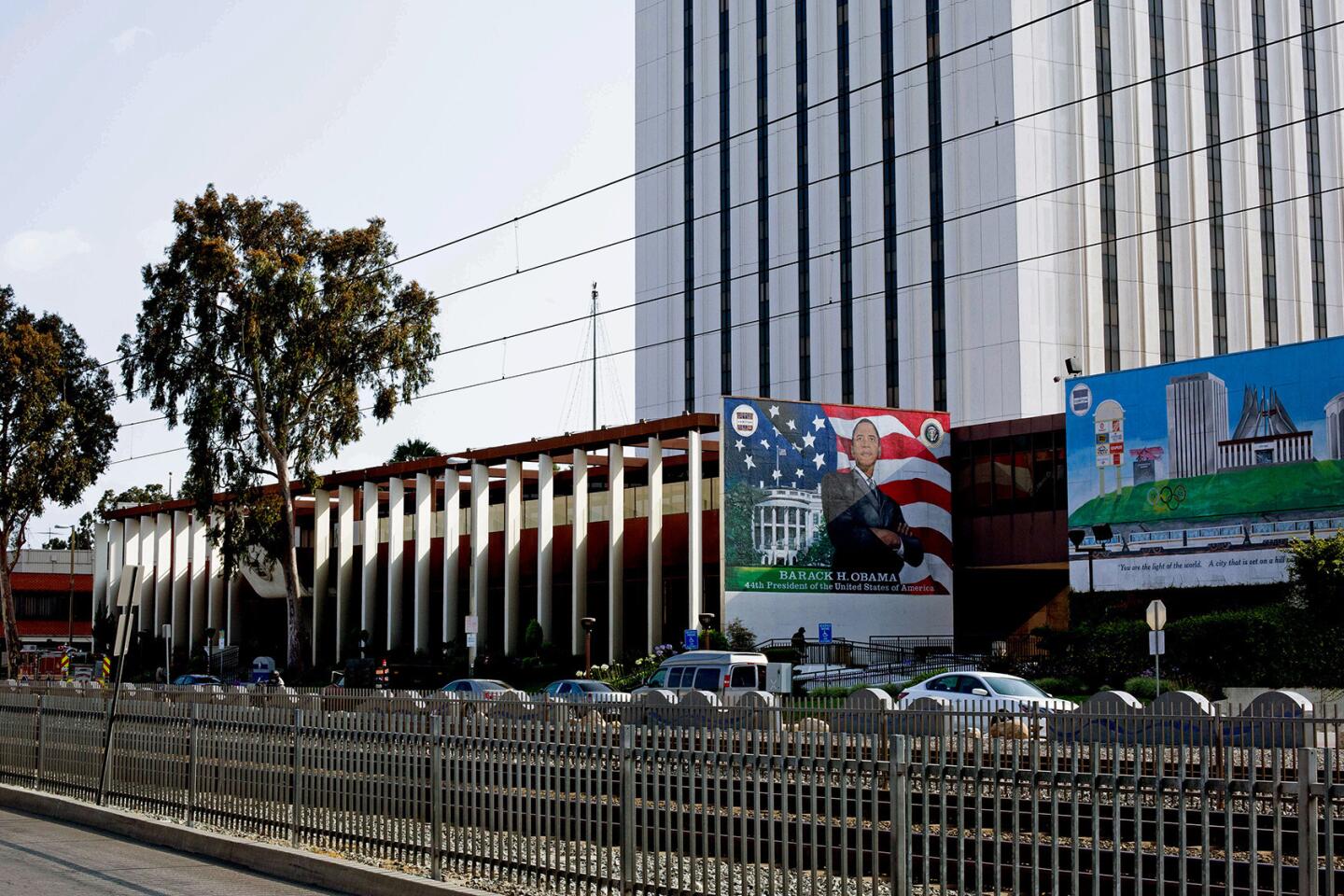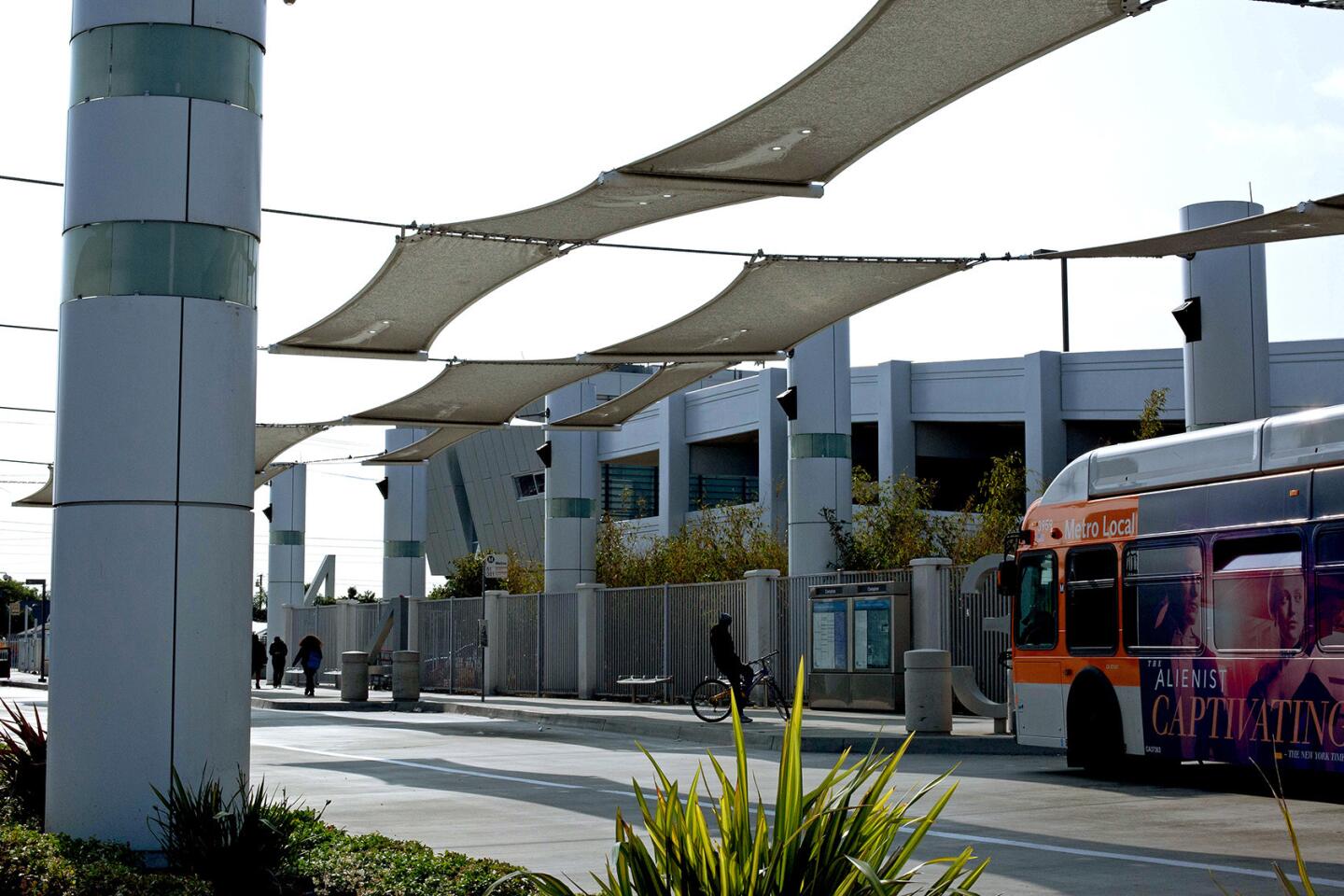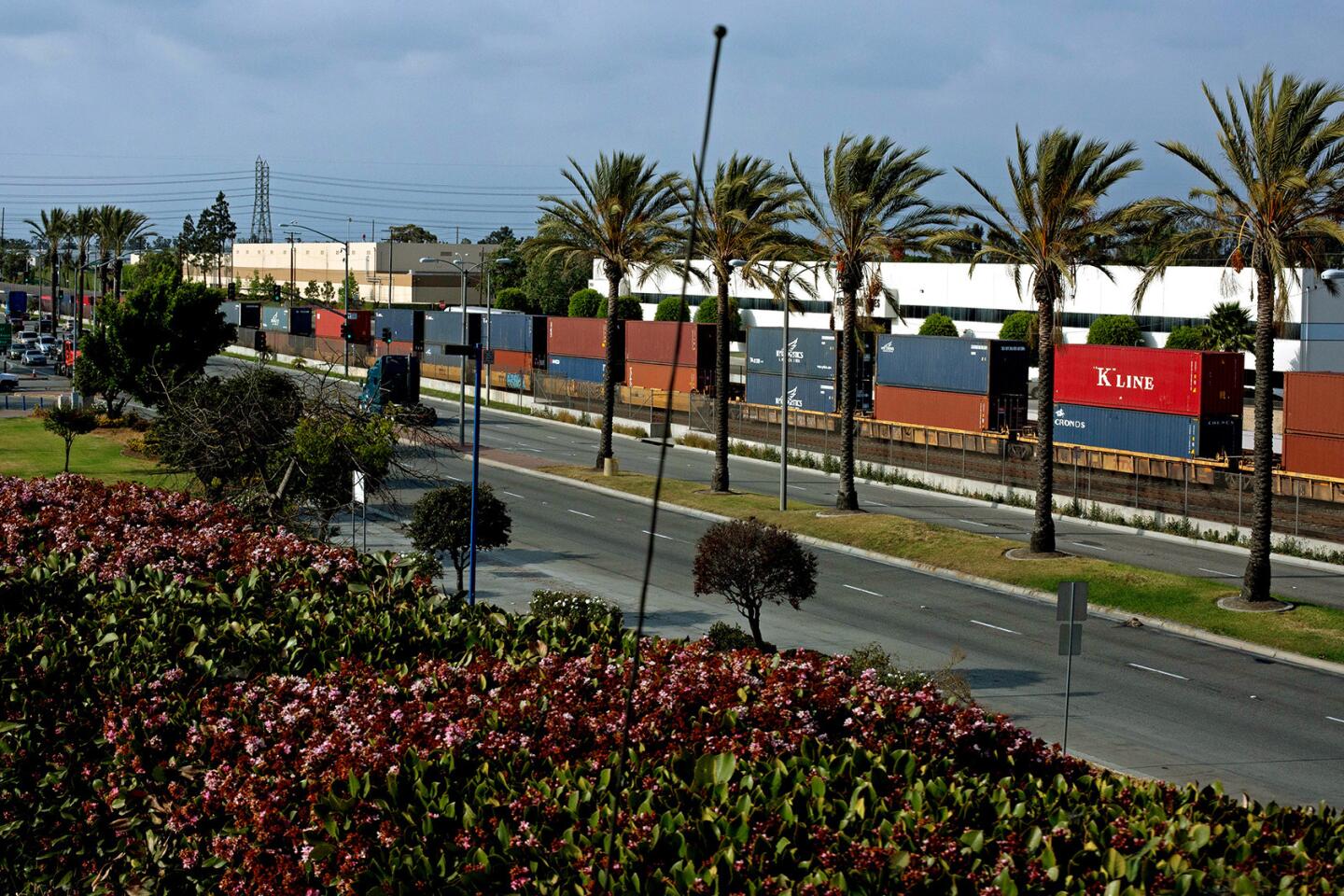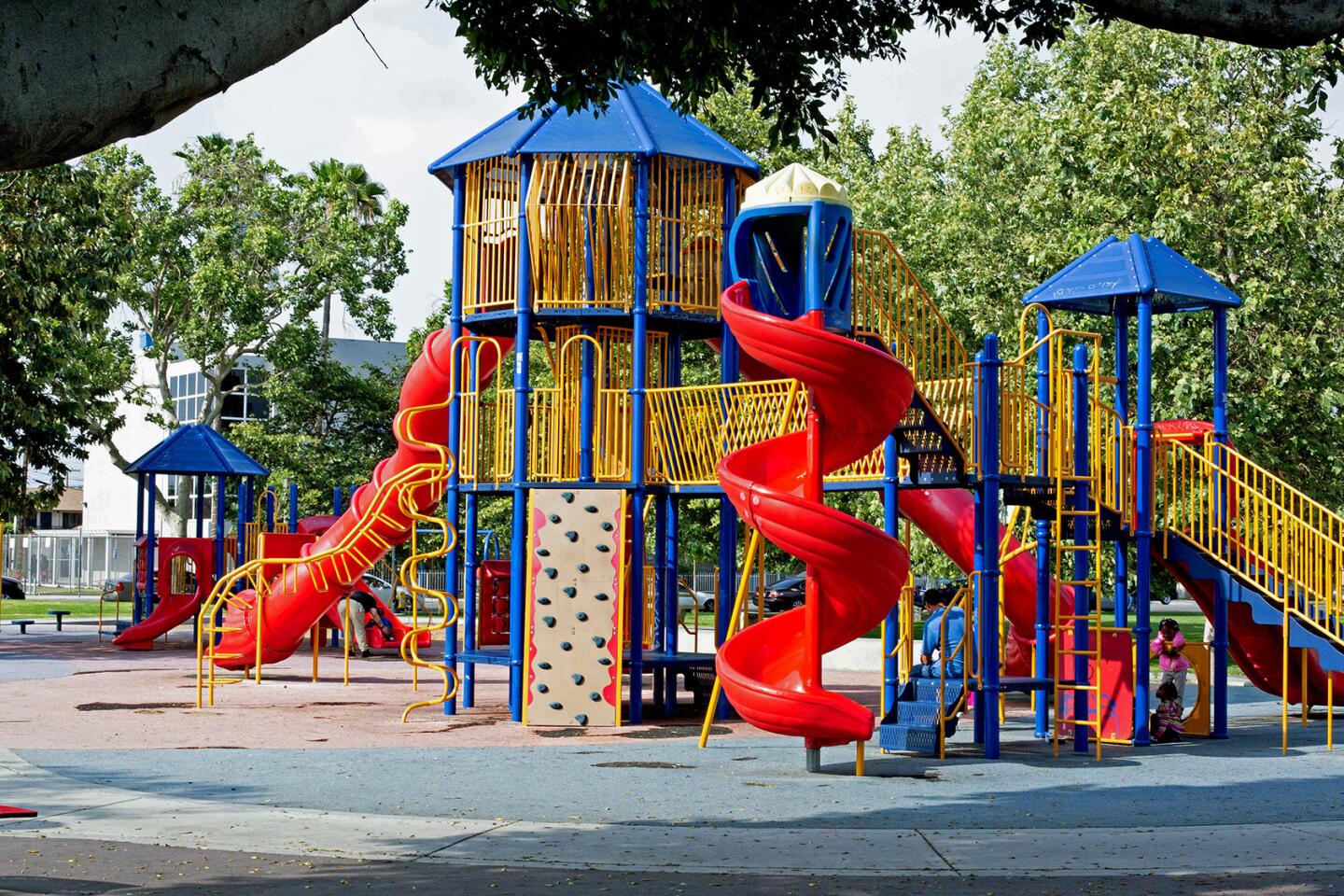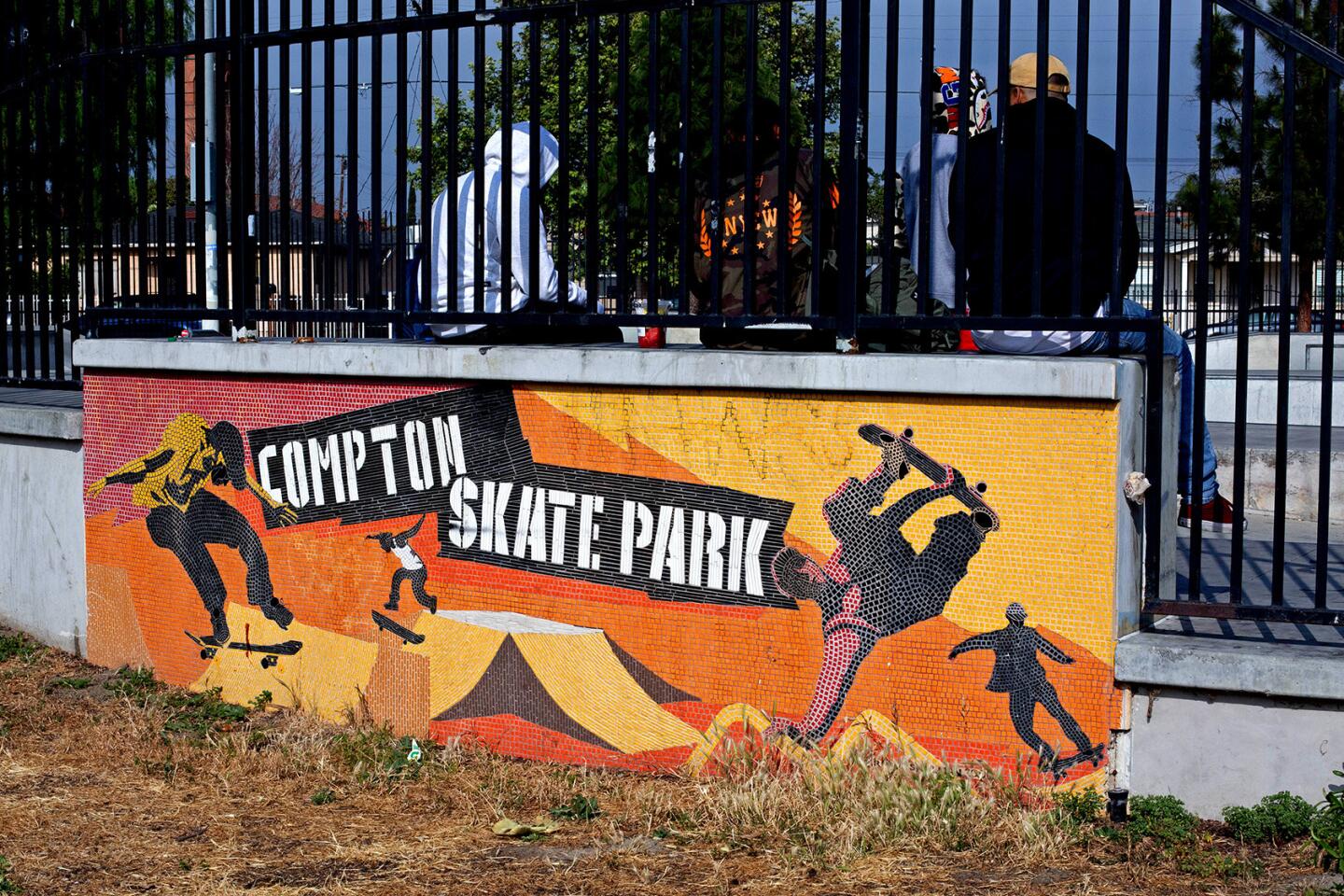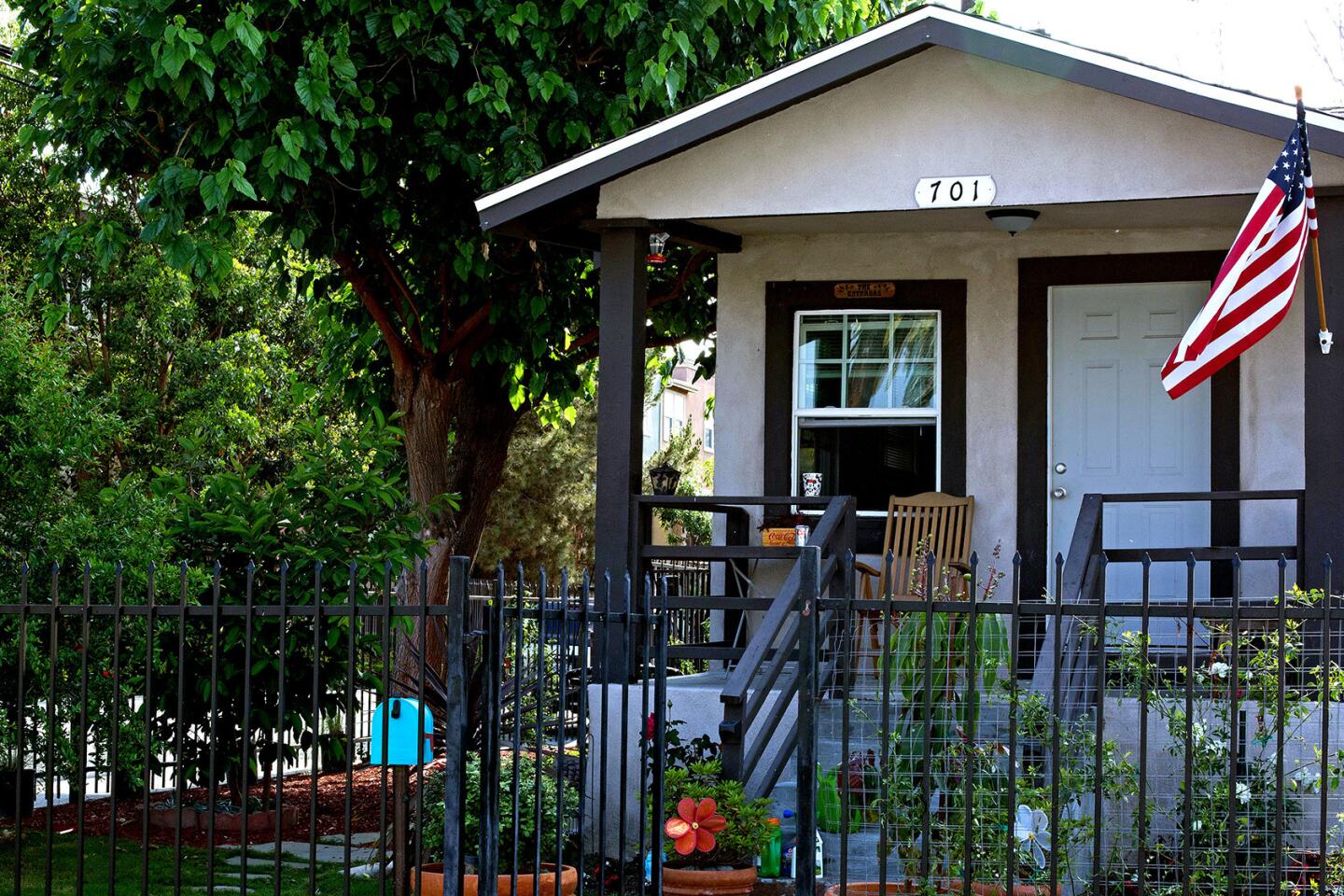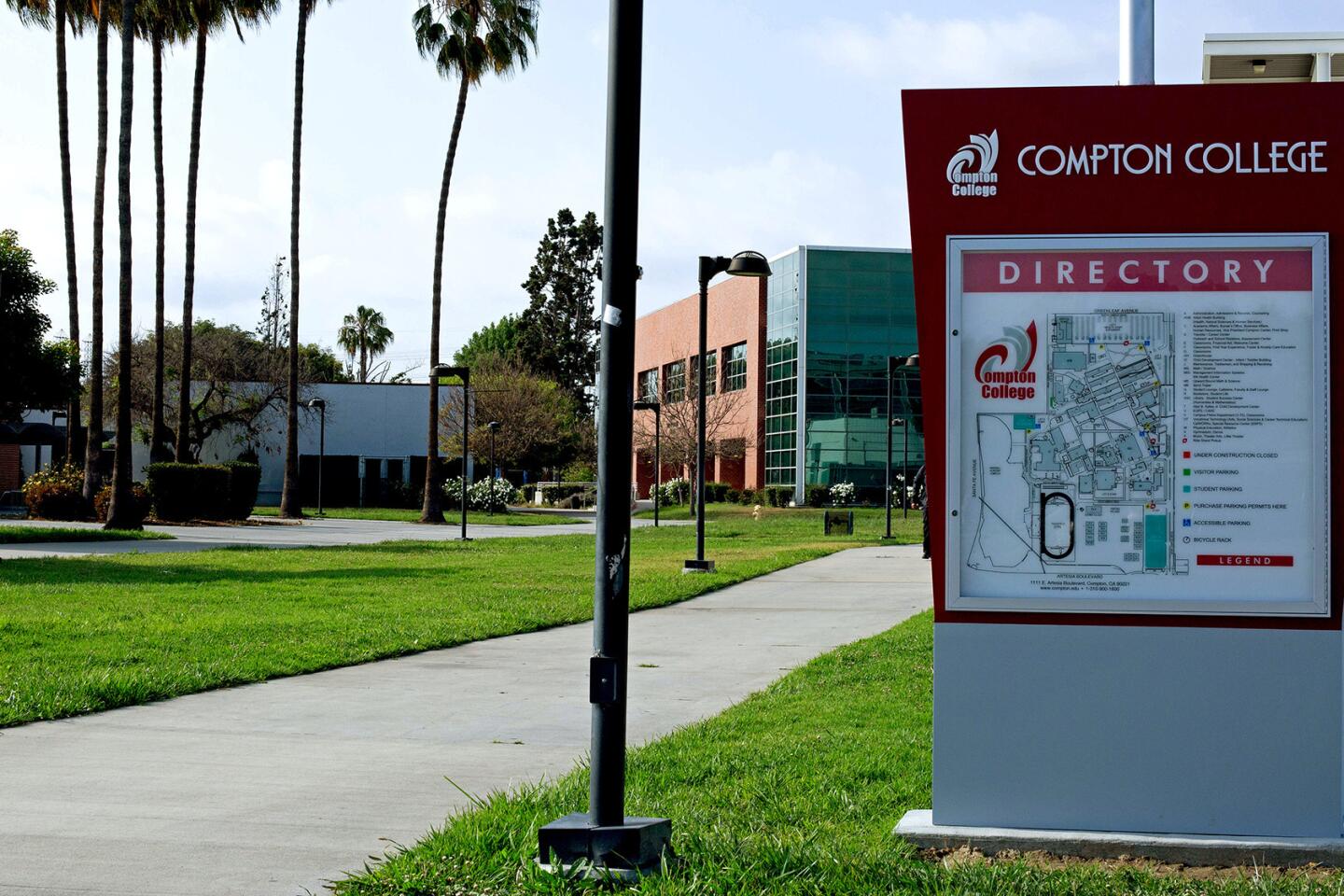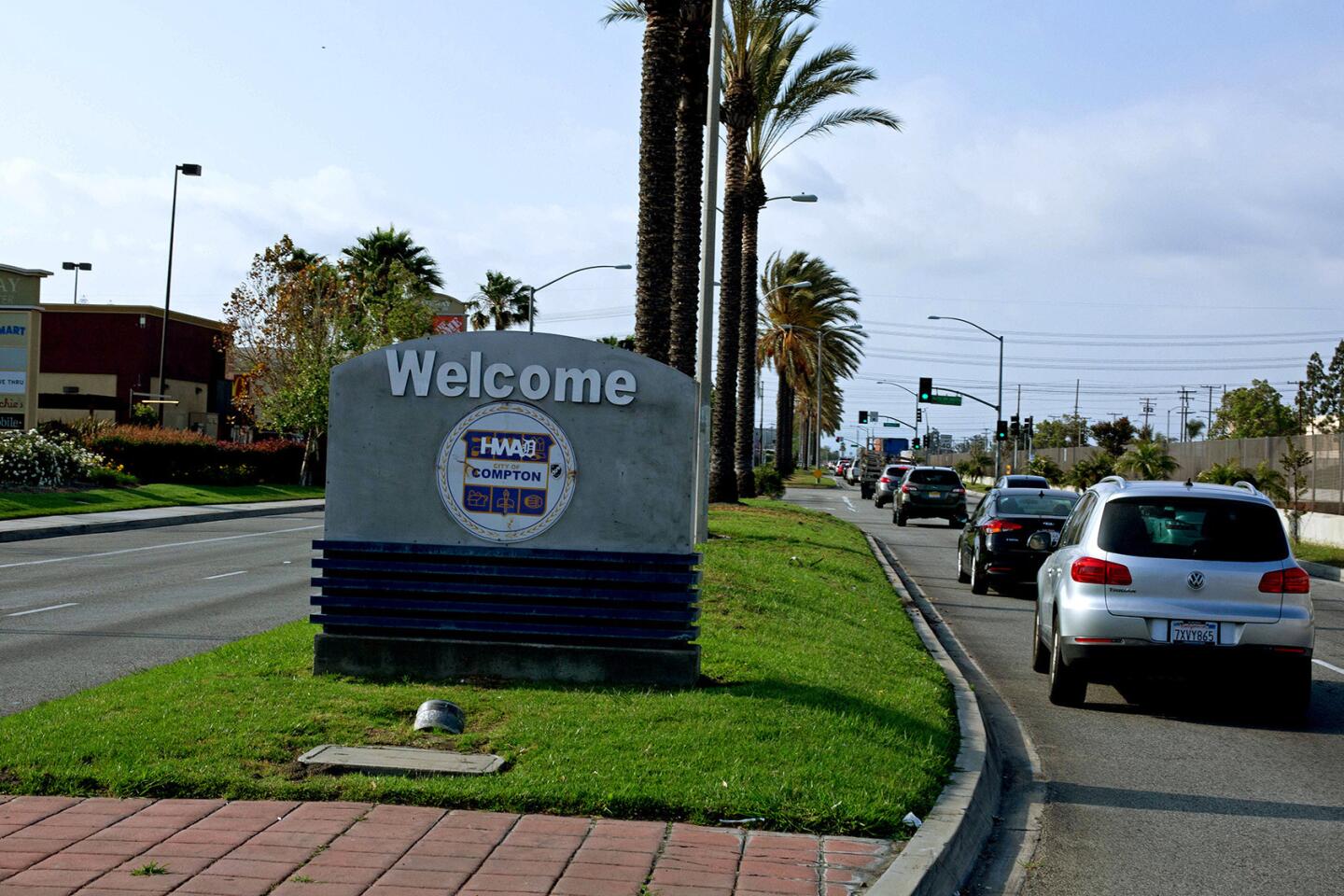Neighborhood Spotlight: Compton’s grit sees it through challenging times
- Share via
From its beginnings in the late 1860s, Compton has always been a place that has tested its residents, whether through natural disaster or societal ills.
The first settlers in the region arrived here in desperate straits. They came from Stockton, where the Gold Rush was going bust, looking for a place to put down stakes and make a living outside the collapsing gold mining industry.
They set up camp near the halfway point of the stretch of the L.A. River that ran from the pueblo to sea, a swampy region crisscrossed by creeks and subject to floods, one of which promptly deluged the nascent settlement soon after its founding.
This less-than-propitious beginning, combined with the fact that the nearest general stores were a hard 10-mile ride away and, as the city’s official history puts it, “gathering firewood required a three-day trip to the mountains near Pasadena,” might have put off most settlers.
The founders of the city of Compton, however, were not to be dissuaded by the hostility of the natural environment or lack of local resources. They gritted their teeth and set about building a town that incorporated as a city in 1888, just the eighth in Los Angeles County.
Despite the regular flooding that swamped the city as recently as 1962, Compton thrived in the 1920s, an era that saw the opening of the Compton Airport and Compton Junior College, and the growth of a bustling downtown business and retail district.
Much of that progress was undone in 1933, as the Long Beach earthquake devastated Compton, collapsing buildings across the city and killing nearly 120 across Southern California. Again, residents rolled up their sleeves and rebuilt.
In the late 1960s, Compton began to face perhaps its biggest challenge as the city, which had become home to many African Americans following the reversal of Southern California’s racially discriminatory housing laws, began to lose its middle-class residents to nearby communities such as Carson.
A general lack of economic opportunity caused by the deindustrialization of South Los Angeles, combined with the devastating effects of the crack cocaine epidemic, led to a skyrocketing crime rate in the 1980s and ’90s.
Out of that turmoil arose one of the most important musical movements in American history, as such groundbreaking rap artists as N.W.A began to document the conditions in Compton.
The success of those pioneering acts laid the groundwork for a string of breakout rappers who have emerged from the city, a tradition carried on by contemporary greats such as Grammy Award-winning Kendrick Lamar.
Today’s Compton, while still facing economic headwinds, enjoys a much-reduced crime rate and is in the process of rebuilding its commercial and industrial sectors.
Neighborhood highlights
Hub city: Compton’s location in the geographic center of the Los Angeles region and its proximity to freeways and the Metro Blue Line make it a choice location for commuters.
Farm life: For those looking for a semirural lifestyle in the heart of the city, Compton’s Richland Farms neighborhood offers a rare opportunity to raise crops and horses.
Grassroots: Like their forebears, today’s Compton residents have taken it upon themselves to help improve their city, as epitomized by groups such as the Compton Initiative and Unearth and Empower Communities.
Neighborhood challenge
A long road back: Although Compton has made great strides in recent years, the challenges it faces in terms of bringing investment and opportunity to the city are real, and entrenched.
Expert insight
Maya Anderson, who’s been selling homes in Compton for seven years, said the city’s consistent home prices have fostered a community of long-term residents.
“You won’t find many houses selling for more than $500,000 here, and that’s a good thing,” Anderson said. “It’s helped the city avoid the gentrification that’s plagued other areas.”
She said many of her clients are first-time home buyers who’ve lived in the area most of their lives, and the $300,000-$400,000 price tags make home ownership a possibility for people who’d be stuck renting in other areas.
“The City Council is relatively business-friendly, so neighborhood staples can flourish, and new restaurants will pop up every once in a while,” Anderson said. She noted that two quintessential spots are Loreto’s Fried Turkey and La Doña Tamalería.
Market snapshot
The majority of Compton fits into three ZIP Codes. On the west side, 90220, based on 33 sales, the median sales price for single-family homes in March was $395,000, up 18.8% year over year, according to CoreLogic.
On the east side, 90221, based on 20 sales, the median single-family home sold for $397,000, up 13.3% year over year. In 90222, the north side, based on 21 sales, the median home sold for $360,000, up 2.6% year over year.
Report card
Compton holds 24 public schools within its boundaries. Of those, Laurel Street Elementary scored the highest on the 2013 Academic Performance Index, at 898. Other bright spots are Tibby Elementary, at 873, and Jefferson Elementary, at 865.
The area’s two largest high schools, Dominguez High and Compton High, scored 613 and 606, respectively.
Times staff writer Jack Flemming contributed to this report.
More to Read
Sign up for Essential California
The most important California stories and recommendations in your inbox every morning.
You may occasionally receive promotional content from the Los Angeles Times.

